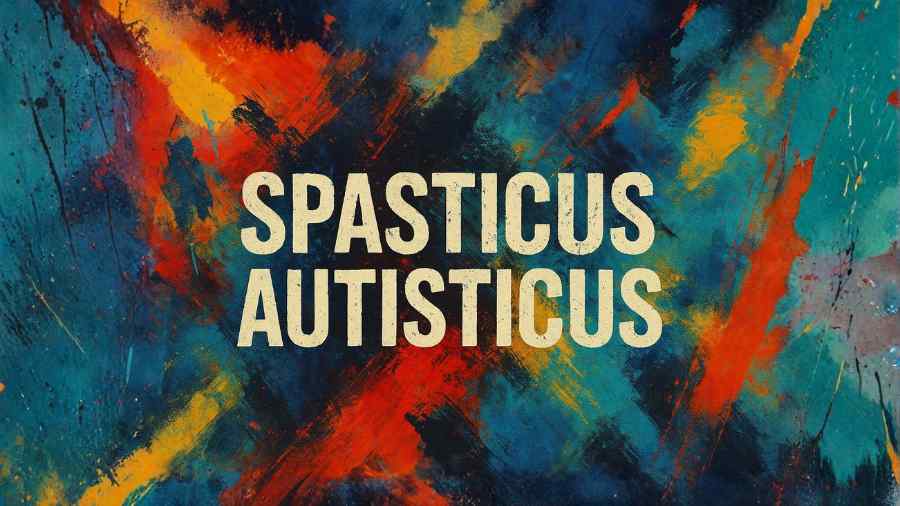Spasticus Autisticus: A Defiant Anthem of Disability Identity and Cultural Resistance

The term spasticus autisticus may sound provocative, confrontational, and even unsettling at first encounter. This is intentional. It is the title of a powerful song released in 1981 by the British musician Ian Dury, a figure who lived with the lifelong effects of polio. The song was not created merely for entertainment; it was a bold declaration of identity, independence, and frustration against how society viewed disabled individuals. Through its unapologetic delivery, it challenged perceptions of difference and asserted the dignity and autonomy of disabled people.
The Social and Political Context
To understand spasticus autisticus, one must first explore the world in which it was created. The early 1980s were a period when disabled individuals were commonly presented as passive recipients of charity rather than independent members of society. Public campaigns often portrayed disability through pity-driven narratives.
In 1981, the United Nations declared the year the International Year of Disabled Persons. The aim was to promote awareness and support for disabled people, but many individuals with disabilities felt the tone used by governments and organisations was patronising. The language of “special treatment” and “care” overshadowed discussions on real rights, access, and inclusion.
Ian Dury, who experienced discrimination throughout his life, felt deeply uncomfortable with how disabled people were being represented. Instead of empowerment, he saw a spotlight that highlighted vulnerability and dependency. And so he responded in the best way he knew: through music that spoke with honesty and defiance.
Ian Dury and His Personal Experience
Ian Dury contracted polio as a child, which left him with lifelong mobility challenges. Growing up in a culture where the word “spastic” was used as an insult, he was no stranger to cruelty, mockery, and exclusion. Yet he became a celebrated musician, performer, and songwriter, proving that disability was not a limitation to creativity or capability.
His work often contained sharp humour and uncompromising commentary on society. With spasticus autisticus, however, he pushed further than ever before. He wanted the song to act as a rallying cry for people who had been dismissed or spoken down to. Instead of being silent, he roared.
Meaning Behind the Title
The title spasticus autisticus intentionally echoes the famous line from the film Spartacus, in which enslaved individuals collectively declare, “I am Spartacus!” to protect one another’s identity and dignity.
Similarly, Dury used this structure to create a collective voice of disabled people asserting:
“I am here. I have identity. I do not need your pity.”
The choice of language was provocative. Words like “spastic” were, and still are, highly sensitive. But Dury used them not to offend others, but to confront society’s prejudices.
He wanted to demonstrate how language can shape perceptions — and how reclaiming a word can shift power dynamics.
The Lyrics and Message
The song opens with a bold statement that sets the tone immediately. It speaks directly to those in what Dury calls “normal land,” asking them to truly listen, even if the message makes them uncomfortable.
Throughout the lyrics, there is frustration, resilience, humour, and pride. The song declares that disabled people are not silent, weak, or broken. They are living, thinking individuals with their own identities — not objects for sympathy campaigns.
The refrain “I’m Spasticus! I’m Spasticus! I’m Spasticus Autisticus!” is intentionally loud and unfiltered.
It demands to be heard.
The Public Reaction and Censorship
Upon release, the song caused immediate controversy. Many radio stations, including the BBC, refused to play it. They believed the language was offensive and inappropriate for public broadcast. Ironically, this reaction proved Dury’s point.
Instead of engaging with the message — challenging stereotypes and recognising disabled autonomy — institutions chose silence. They treated disabled identity as something too uncomfortable for public ears. By banning the song, they reinforced the very exclusion Dury was protesting.
However, within the disability rights movement, the song was recognised as a moment of truth-telling. It spoke a language that many disabled people understood but were rarely allowed to express.
Reclamation, Identity, and Empowerment
Reclaiming language has long been a strategy for marginalised groups. By taking words once used against them, communities can reshape narratives and assert control. In spasticus autisticus, Dury attempted precisely that.
He did not shy away from the harsh reality of how disabled people were treated. He put it forward, unfiltered, so society could not ignore it. This act of reclaiming language was more than artistic expression — it was political.
Renewed Cultural Significance
The song gained renewed recognition decades later when it was performed during the opening ceremony of the 2012 Summer Paralympics in London. The performance was bold, inclusive, and visually striking, featuring performers with various disabilities expressing strength and unity.
This moment demonstrated how attitudes had begun to change. What was once seen as too confrontational had become a symbol of empowerment.
Disability Identity and Modern Understanding
Today, discussions about disability have evolved. There is greater awareness of accessibility, representation, and inclusion, although challenges remain. The message of spasticus autisticus still holds relevance:
- Disabled people have the right to define their own identities.
- They do not need to be pitied or spoken for.
- Society must listen, not just observe.
The song stands as a reminder that the fight for dignity is ongoing.
Influence on Disability Rights and Artistic Expression
Spasticus autisticus helped show that art can be a powerful tool for social change. It also influenced how disability activism approaches identity — not simply asking for compassion, but demanding equality.
In culture, media, and politics, there is increasing recognition that disabled voices must be included in storytelling, decision-making, and public leadership. This shift aligns with the core of Dury’s message.
Why the Song Remains Important
The song matters because it forces reflection. It reminds society that discomfort often comes from confronting bias. Its message endures precisely because it does not soften itself to make others feel comfortable.
It asks listeners to move beyond charity and instead embrace respect, understanding, and genuine inclusion.
Conclusion
Spasticus autisticus is far more than a song. It is a statement — bold, unrestrained, and unforgettable. It emerged from a moment when disabled individuals were seen as dependent and voiceless. Instead of accepting that narrative, Ian Dury tore it apart.
The legacy of the song lies in its refusal to quietly accept inequality. It stands as a symbol of identity, resistance, and empowerment. For many, it remains a reminder that every individual, disabled or not, deserves not only understanding but respect and autonomy.



